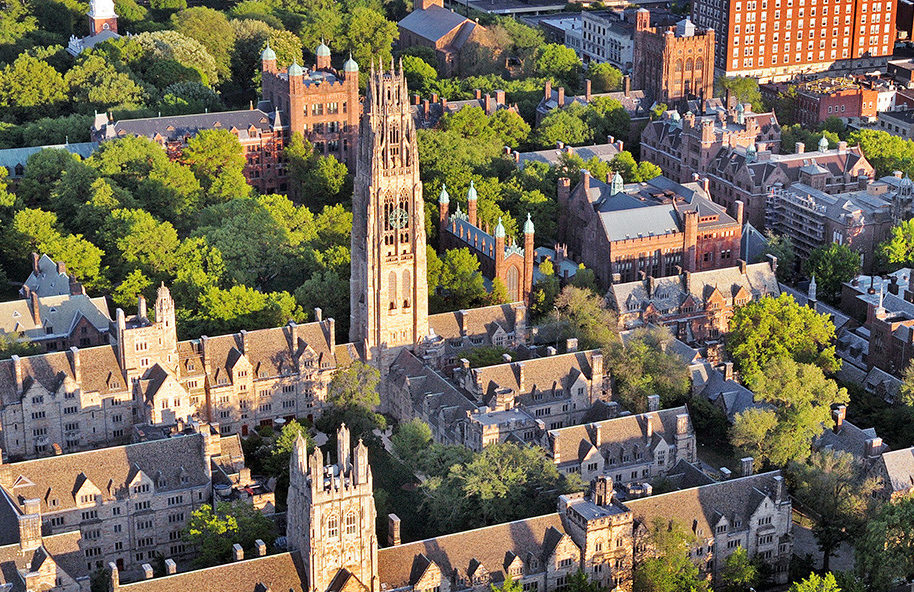
Yale News
As students start the spring semester, local coronavirus infection rates are so high that they might have moved Yale to a red alert on its color-coded COVID-19 alert system, confining students to their dorms and eventually sending them home.
Connecticut’s rolling 7-day average for new cases per day sits at 1,744 as of Sunday — which may have been enough to put the University in its most restrictive red level, according to Richard Martinello, medical director of infection prevention at Yale New Haven Hospital and public health committee member. When Yale first set the orange alert level on Nov. 6, the rolling average was 988, according to a New York Times database.
Despite that growth, the alert level remains unchanged. The numbers are one factor that the committee considers when advising Spangler on the levels. Though infection rates have risen, Martinello said that it would not be a good idea to start the semester at “crisis level,” as it would be challenging to scale up safety protocols should the situation worsen.
“The numbers were only one piece of everything that was leading to those color designations that Dr. Spangler was communicating,” Martinello told the News. “It just really reflects how much COVID is here in Connecticut right now that we’re beyond where we had already set those numbers.”
The committee has not yet discussed whether to recalibrate the alert levels to account for increased transmission in the area, Martinello said. While the committee has met frequently over the past several months, its focus has been on the vaccine rollout and other aspects of the upcoming term, he explained.
Epidemiology professor and Public Health Committee member Albert Ko added that though case numbers are higher in February than they were in August, there is also more confidence in Yale’s risk mitigation efforts. The experience from last semester shows that the University’s protective measures are largely effective at controlling outbreaks, he said, and there are mechanisms to scale up protection as needed.
Last semester, Yale introduced color-coded alert levels to convey details about the public health situation on campus and in the surrounding area. The alert levels specify stringent guidelines for student behavior. Orange alert — the current level — restricts students living in their residential college to campus, scales down research and moves all classes online. The red alert level, as explained on the University’s COVID-19 website, indicates that there is a higher risk of coronavirus on campus and that there are significant concerns related to available quarantine, isolation or hospital capacity. No gatherings of any size are permitted in the red alert level and students must remain in their dorms until they can return home.
But the designations themselves are governed by less specific metrics. The Public Health Committee, which advises COVID-19 Coordinator Stephanie Spangler, looks at mathematical models when considering what alert level to assign. But the committee does not establish ironclad triggers to move between alert levels, instead considering a broader set of data to offer them more latitude in decision-making.
The Public Health Committee considers three principal factors when deciding whether to place residential colleges into lockdown or to send students home, Dean of the School of Public Health Sten Vermund said. It looks at the rates of transmission in the community, the number of students who test positive and are in isolation and the number of students who have been exposed and are in quarantine.
Similar to the fall term, the committee did not assign fixed values or thresholds that would require students to finish the semester from home for the spring, Vermund said. That approach affords them flexibility based on how the numbers are trending.
The committee does not finalize specific, automatic triggers for changes in alert level, Spangler told the FAS Senate at its Nov. 19 meeting. At the start of the fall term, the committee was most concerned about rising case numbers among undergraduates. That later shifted to worries over higher rates in the New Haven community that could spill over into Yale.
Ko offered multiple explanations as to why the alert levels are not governed by specific numbers.
One reason is that Yale is connected to parts of the country beyond New Haven, Ko said. If there are few cases in New Haven, but a large outbreak in New York, Yale might want to “pull the trigger” on more aggressive preventative measures earlier.
Another reason for the flexible thresholds is that Yale, and the United States in general, has imperfect data on infection levels, Ko said. Though undergraduates are tested twice weekly, dining and environmental services staff are not required to be tested as frequently.
Additionally, Ko said, the models rely on a specific transmissibility of the virus. He thinks that there is community transmission of the B.1.1.7 variant in Connecticut and suspects there are more cases that are not detected because there is not a widespread genomic sequencing program. He also would not be surprised if the variants first identified in Brazil and South Africa turn up in Connecticut as well, Ko said.
The big question, Ko said, is whether the variant will exponentially drive up case numbers and hospitalizations. Already, case numbers are higher than they were in August. For this reason, it makes sense to start the semester in orange alert instead of in yellow alert — how last semester started, he said.
Ko said he does not speak on behalf of the entire Public Health Committee.
“My own concern is what we should be doing to protect not just faculty but ancillary staff: the administrators, the people that are coming in and most at risk, people who do the shipping and the deliveries, people who work in the dining halls,” Ko said. “How are we protecting them? Those are the questions that concern me, that keep me up.”
Yale has had a total of 156 COVID-19 cases since the start of January, per its COVID-19 dashboard.
Rose Horowitch | rose.horowitch@yale.edu







